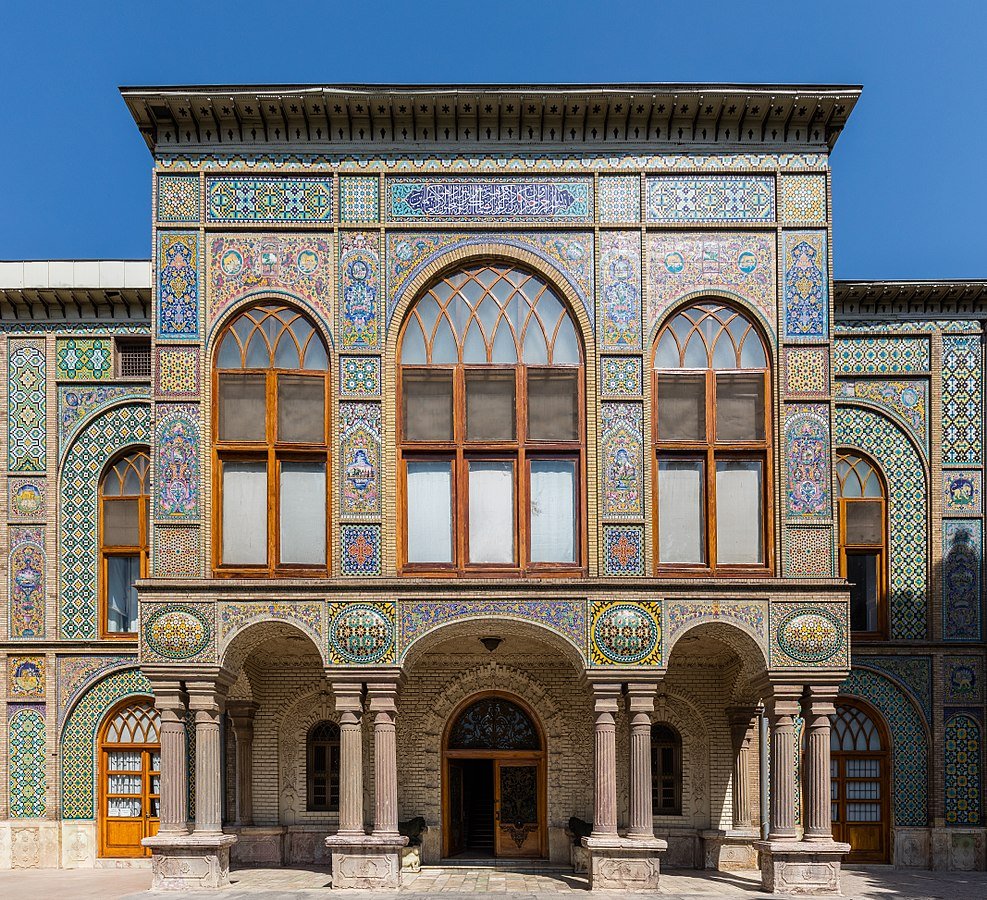#13289. Persian Mosaic Facade: Harmony of Color and Geometry in Traditional Architecture

The image presents a magnificent example of Persian architecture with characteristic use of tile mosaics creating a stunning visual effect. The facade of the building represents a vivid example of traditional Iranian architectural style, where the richly decorated surface serves not only aesthetic purposes but also tells the story of cultural heritage.
The facade features a symmetrical composition with three arched windows on the upper floor, the central one being more imposing in size. The tile mosaic covers almost the entire surface, creating amazing geometric and floral patterns in a traditional palette: turquoise, blue, yellow, and terracotta shades predominate. Of particular note is the calligraphic inscription in Persian language located at the top of the facade, which is typical for Islamic architecture.
The lower level of the facade is adorned with slender columns that support the upper floor and create a portico with three arches. The wooden window frames contrast with the multicolored mosaic, adding warmth and naturalness to the overall composition. The facade design demonstrates masterful command of the technique of creating complex ornamental compositions, where each element is thought out to the smallest detail.
When designing a modern facade, several techniques can be borrowed from this example: using symmetry to create a harmonious composition, adding decorative panels with geometric ornaments, playing with textures and materials to create expressive contrast. Even small decorative inserts inspired by such mosaics can give individuality and character to any modern building.